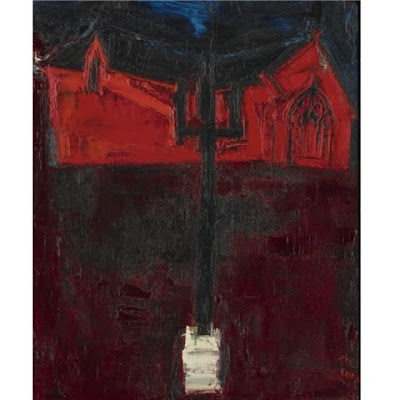




Selected biography




Born in 1922 in Babaria in Madhya Pradesh, Raza lived his first impressionable 13 years in the forest ranges of Narsimhapur and Mandal districts where his father was posted as a forest officer. In his early childhood, therefore, his environment was formed of the Narmada river surrounded by the Satpura and Vindhyachal mountain ranges, dense forests, birds, animals, tribal life, symbols and mythology. With these beautiful natural surroundings forming the basis of his visual archive of memories, Raza developed his intuitive proclivity. (full article)
Un maître indien à Gorbio. Il est considéré comme l'un des plus grands peintres indiens contemporains. Chez Sotheby's, ses toiles s'arrachent. Mais c'est à Gorbio, dans une maison de pierre toute simple, que Sayed Haider Raza, a élu sa résidence d'été. C'est là que ses admirateurs se pressent, comme cette richissime collectionneuse américaine, débarquée de Washington un vendredi soir d'août, émue aux larmes de retrouver son « maître ». Par sa peinture autant que par sa personnalité, le maître indien fascine. (full article)
“Une peinture, il faut la construire comme un bâtiment avec une base, des murs et un toit”.Cette phrase de Henri Cartier-Bresson révèle la peinture de Raza dans les années 50. S'inspirant de l'art de la composition de Cézanne qui l'influence le plus à cette époque, il regarde ses natures mortes et ses paysages.Dès son arrivée en France au tout début des années 50, Raza va beaucoup voyager de l'Alsace à la Bretagne, de Carcassonne à Menton. Il peint les villages, maisons, clochers donnant vie et structure aux formes. La tradition française dicte son art.
“A painting must be built like a building with a base, walls, and a roof.” This statement by Henri Cartier-Bresson is revelatory of Raza's painting during the 1950's, inspired by the compositions of Cézanne, Raza's primary influence during this period, especially the master's still lifes and landscapes.Upon his arrival in France in the early 50's, Raza began to travel from Alsace to Britanny, from Carcassone to Menton. He painted villages, houses, and steeples that give life and structure to forms. French tradition ruled his art.




The Progressive Artists Group. (First row: Sitting, from left) Dr. Mulk Raj Anand, Siloo Bharucha, Mrs. Renu Khanna, K.H. Ara, M.F. Husain, Bal Chhabda, Unidentified, Hazarnis (with folder in hand). (Second row: Sitting, from left) Unidentified, Unidentified, Laxman Pai, Kathy Langhammer, E. Schlesinger. (Standing, from left) Unidentified, Mrs. Kekoo Gandhy, T.A. Schinzel (behind Mrs. Gandhy), Krishen Khanna (in striped tie), Sadanand Bakre (in glasses, just behind Khanna), D.G. Kulkarni (in glasses, near Bakre), Gaitonde (to Kulkarni's left), A.A. Amelkar, Unidentified, Tyeb Mehta, Shiavax Chavda (hands folded in front), Prof. Langhammer (dark tie), Kekoo Gandhy, Manishi Dey.






Sourya peint en 1974 peut s'analyser comme un jalon, une transition dans la création de Raza dans les années 70 et 80. C'est à cette époque que Raza prend progressivement conscience que sa peinture n'est pas assez habitée par la spiritualité de son pays natal. Ses voyages et séjours vont se multiplier dès lors.Sourya, “Le Soleil” est aussi le Dieu du Soleil qui émet les rayons de la connaissance qui illuminent le mental. C'est le symbole de l'illumination spirituelle. Présent dans la partie droite du tableau, le cercle noir contrebalance l'abstraction gestuelle colorée de la partie gauche.



